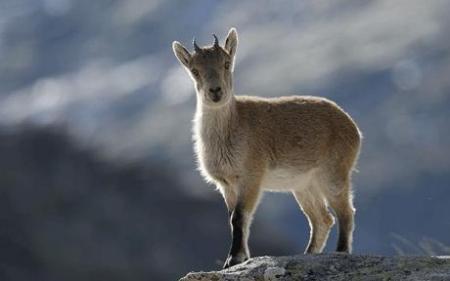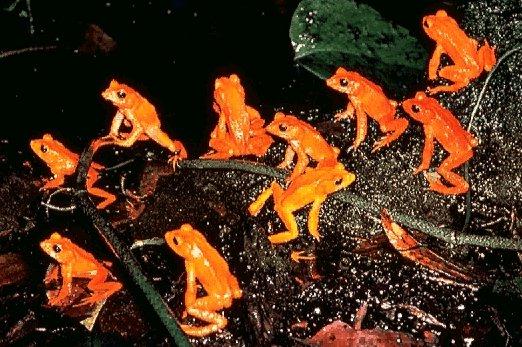Since my group and I are due for the extinction game this Monday, I thought it would be interesting to talk about…ooh, you guessed it, EXTINCTION. Can extinction be extinct? Or is extinction something that is inevitable? Can anything be done to actually stop this outcome? Is mankind the main reason for the extinction of animals or does it go much deeper than that?
Mankind has always been associated as the main reason behind the extinction of animals. Yet, it also appears that we may now be their only chance of survival.
Science and technology today is incredible. The truly amazing thing is how we are on the verge of cloning extinct animals, bringing them back into existence. In fact, just last year, the Centre of Food Technology and Research of Aragon, in Zaragoza, northern Spain, and the National Research Institute of Agriculture and Food in Madrid successfully cloned the extinct Pyrenean Ibex (refer to picture above)! It was the very first extinct creature to ever be brought back through cloning! However, the newborn kid died just seven hours after birth because of a lung defect (apparently, such lung defects are very prominent among other cloned animals, especially sheep). Interestingly, this has opened doors in hope “that it will one day be possible to reproduce long-dead species such as woolly mammoths and even dinosaurs”. How awesome would that be?
The extinction game shows how mankind truly is NOT the sole factor in the extinction of animal species, and that other factors like climate change, failure to reproduce, mobility, predators, evolution, habitat changes also affect an animal’s chances of survival. A very clear example of an animal going extinct outside of human interference is the Golden Toad.
As you can see, its bright orange skin made it very distinctive. Native to the tropical cloud forests which surround Monteverde, Costa Rica, none have been seen since 1989. In 1987, due to the erratic weather, the pools of its breeding sites dried up before the larva could fully mature. Sadly, out of the potential 30,000 toads, only 29 had survived. The last recorded sighting of this toad was in 1989 and since then, none have been spotted. Research has been done on the reproductory behaviour of the Golden Toad and its breeding activity was associated with periods of heavy rainfall. Amazingly, between 1977 and 1982, these toads were breeding rapidly, with males outnumbering females quite immensely. It was reported that these toads were “explosive breeders” and so, to realise that they simply died out in 1987 came as a complete shock to researchers. This, to me, is quite reminiscent of the dinosaurs dying out (especially since it was even before humans walked the earth!).
Nature does not always grant concessions to animals and many times, they go extinct because of natural or behavioural circumstances. I suppose ‘survival of the fittest’ truly applies to the evolution and continuation of animals.
References:
“Extinct Ibex is Resurrected by Cloning” by Richard Gray and Roger Dobson. Telegraph.co.uk, 31 January 2009. URL: http://www.telegraph.co.uk/science/science-news/4409958/Extinct-ibex-is-resurrected-by-cloning.html (accessed on 3 April 2010).
“GoldenToads-CostaRica” by the NOAA/OAR/ESRL PSD, Boulder, Colorado, USA. URL: http://www.esrl.noaa.gov/psd/spotlight/02062002/golden.html (accessed on 3April 2010).
“Ibex_1250749c” by Jose Luis Gomez de. Francisco/naturepl.com. URL: http://zeitgeistinapetiole.wordpress.com/2009/01/31/unique-ibex-species-resurrected-from-extinction/ (accessed on 3 April 2010).
“Reproductive Ecology of the Endangered Golden Toad (Bufo periglenes)” by Susan K. Jacobson and John J. Vandenberg, September 1991. Journal of Herpetology, 25 (3): 321 – 327.


